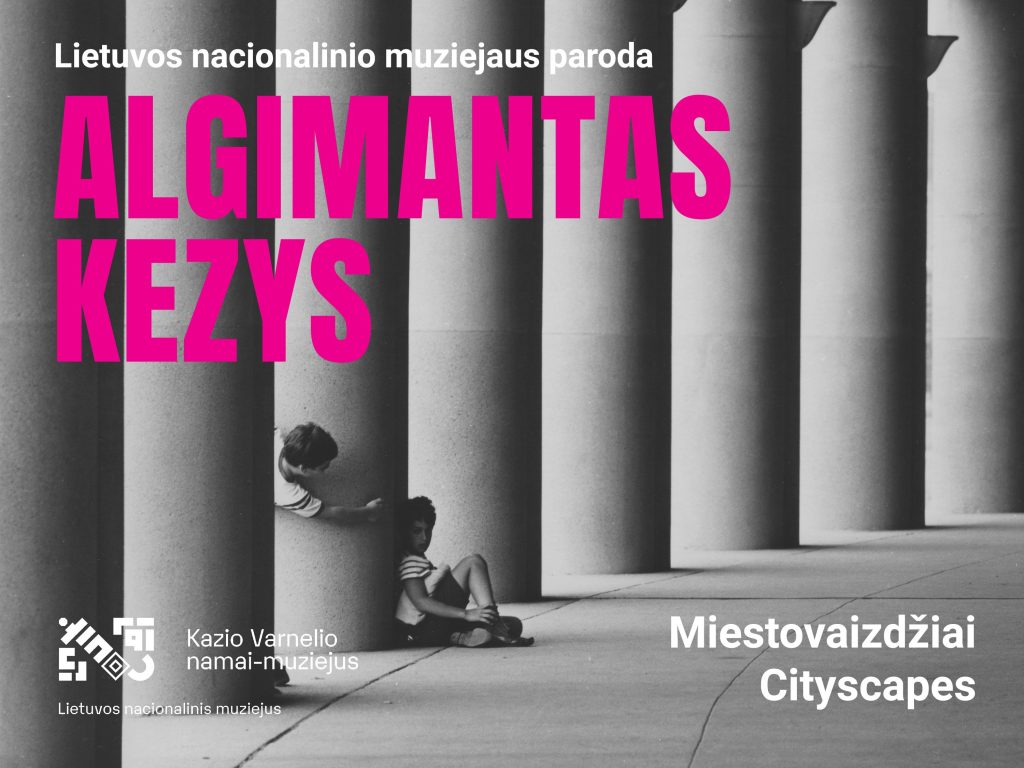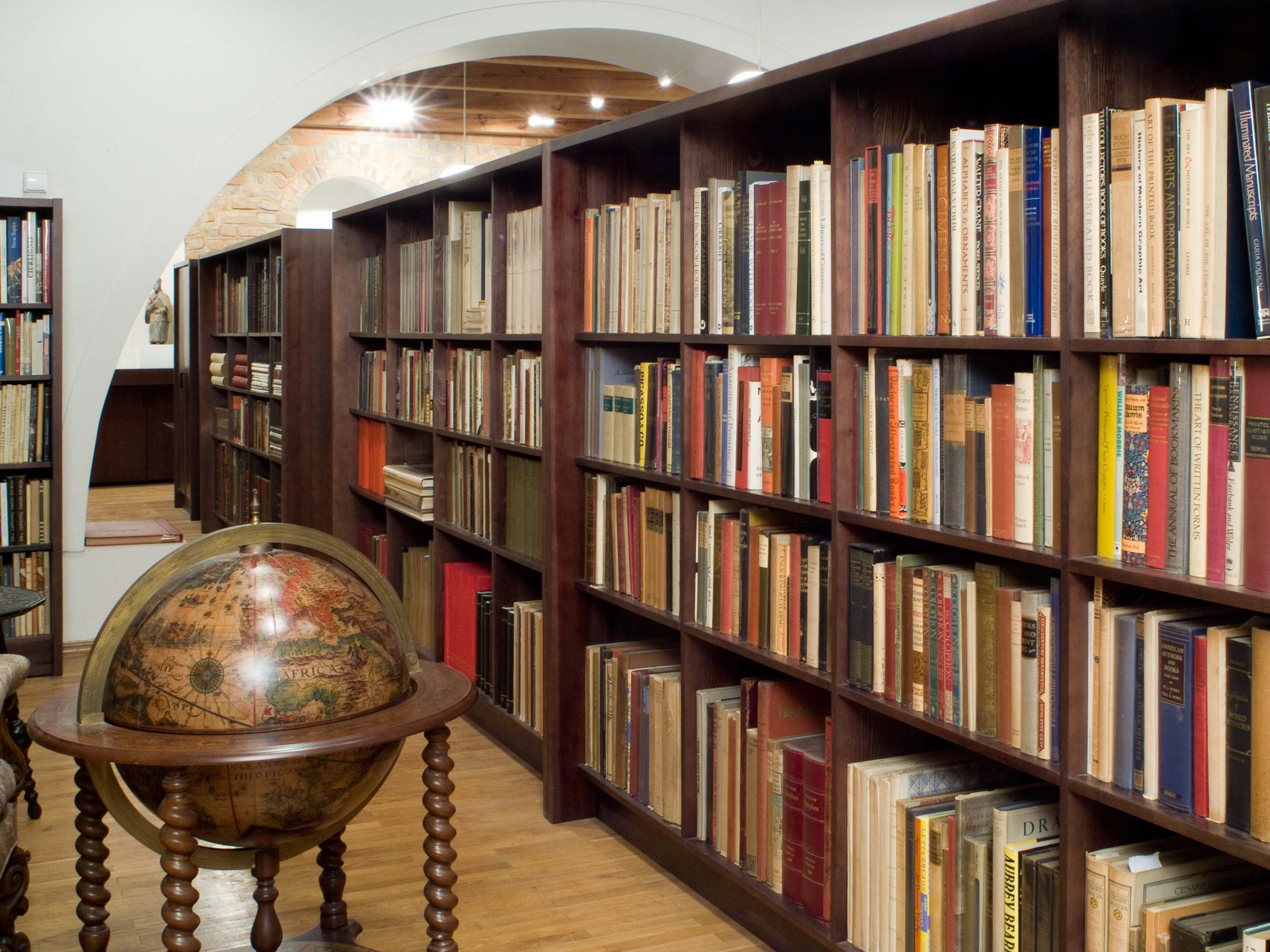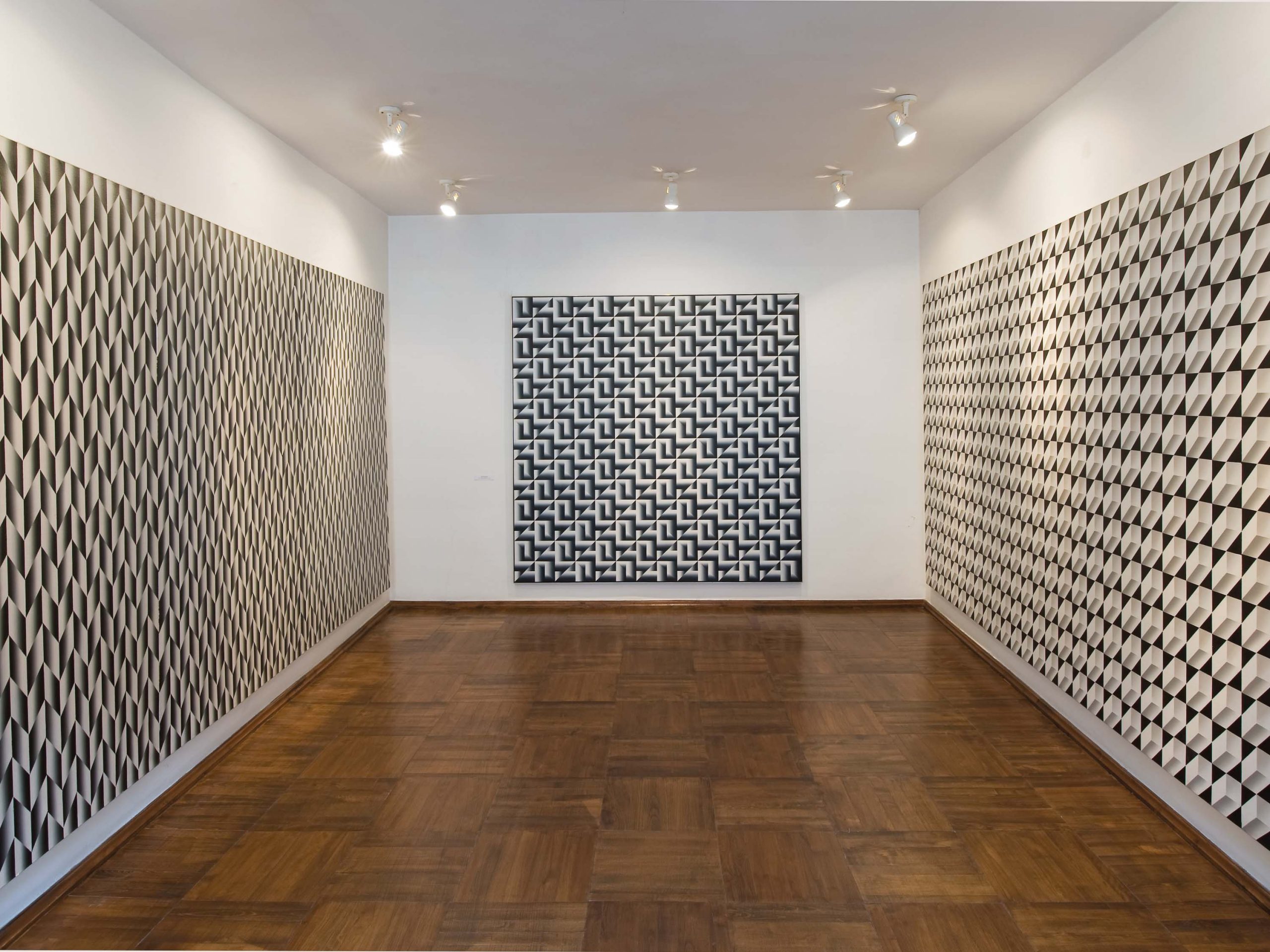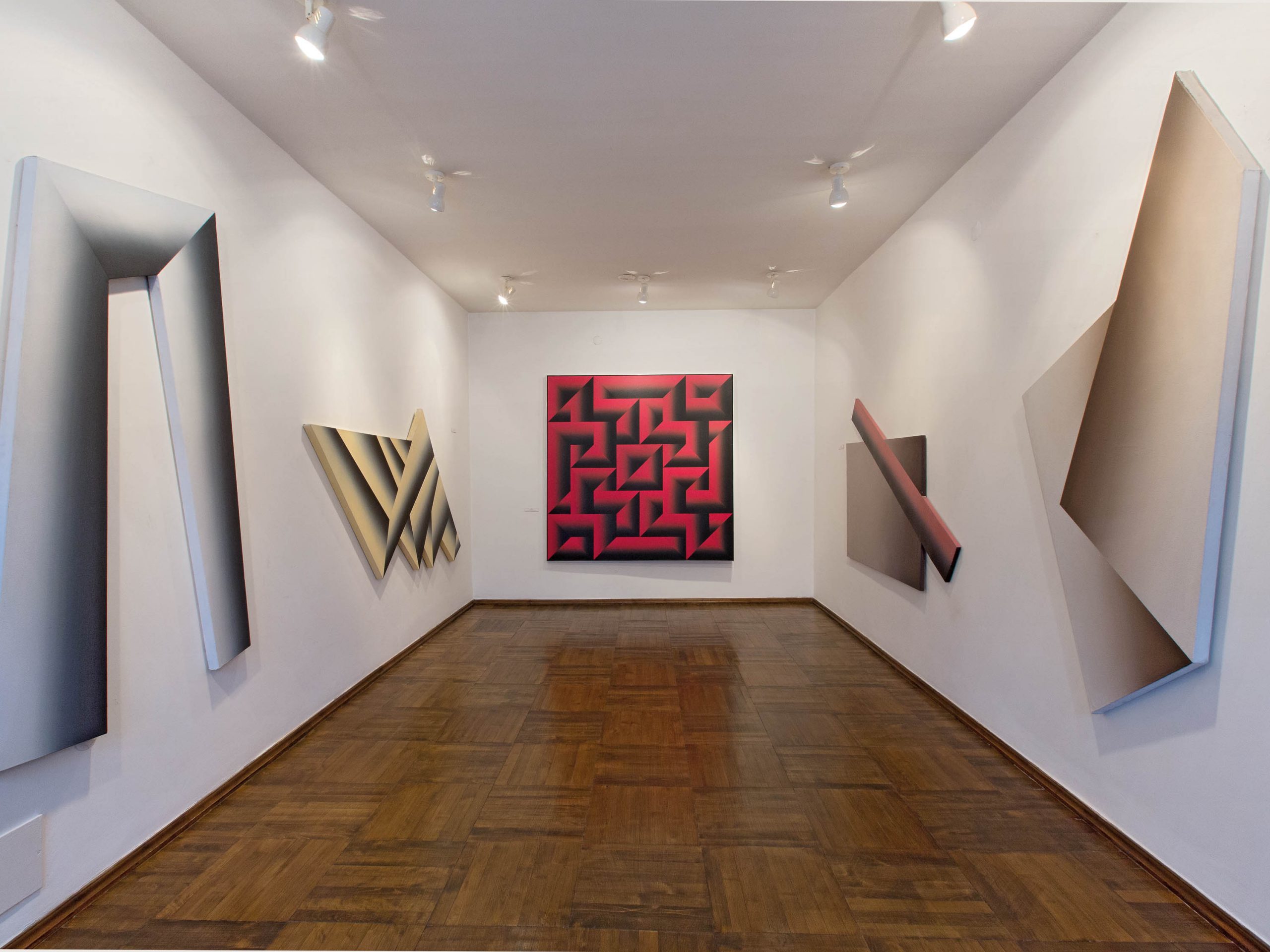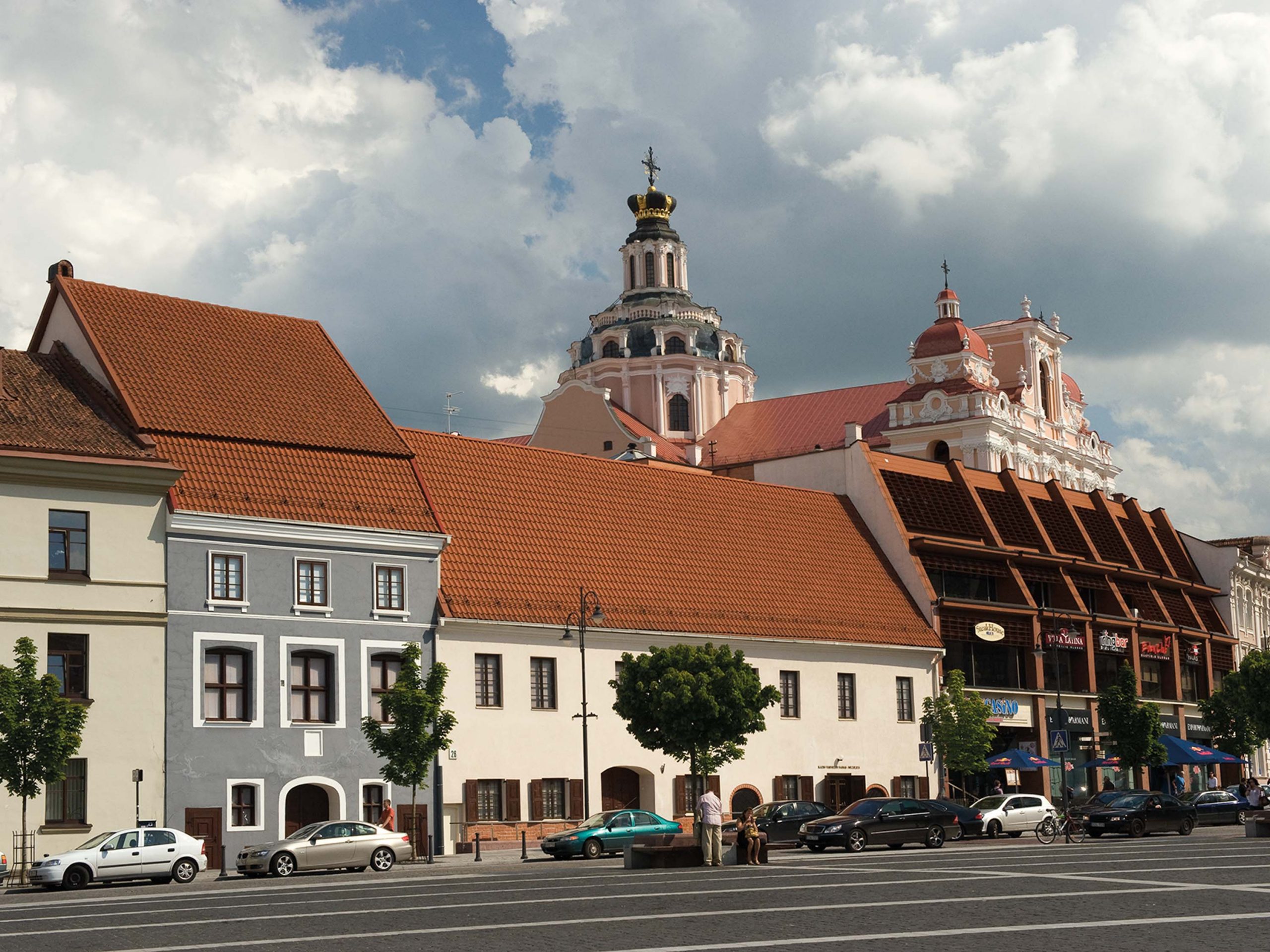The optical art master Kazys Varnelis’s house-museum is located in the very heart of Vilnius Old Town, at 26 Didžioji Street. But it only looks small from the outside – in fact, the museum is an extensive labyrinth of several connected buildings.
Dating back as far as the 15th century, these buildings are among the oldest on Rotušė Square. They are excellent examples of Vilnius Gothic and Renaissance architecture, and contain many authentic antique details. Niches, arches, fireplaces, a Gothic era toilet—these kinds of elements help us better understand the everyday life of the Vilnius residents who once lived and work here.
The complex consists of buildings arranged over two plots: the Small Guild House and the so-called Masalskis or Merchant House.
It is known that in the 15th century, perhaps even from the late 14th century, the Small Guild House belonged to the Mamoničius family of merchants, then later to the Maksimovičius family, who in 1608 handed the building, or part of it, to dozens of the city’s merchants. In the late 17th to the early 19th centuries it was owned by the Basilian monks, then later by the Old Believer Monastery of the Holy Spirit. Over the next several centuries the building functioned as a warehouse for goods, and also contained craftsmen’s workshops, pubs and stores. It is believed that a merchants’ hotel also functioned on the second floor.
The adjacent building was erected at the turn of the 18th century and was owned by the Masalskis, Tšeciakas, and Davidovičius families, as well as the important Domanskis merchant clan. Like many Vilnius buildings, this one was also seriously damaged by the great fire of 1749. The building housed shops and a pharmacy, while the second floor contained residential apartments. This building also still contains a rare feature for Vilnius buildings – a very large open fireplace. Both buildings’ exteriors also underwent many changes – today we can count as many as ten stages of construction.
In 1993 Vilnius city council allocated the building to the Kazys Varnelis Museum. With great sensitivity to and respect for old Vilnius stonework and architecture, the Lithuanian émigré artist Kazys Varnelis (1917–2010) created a true art labyrinth here. In an exhibition that winds through more than 40 rooms, the museum invites visitors to experience a harmonious dialogue between artworks and architecture.



